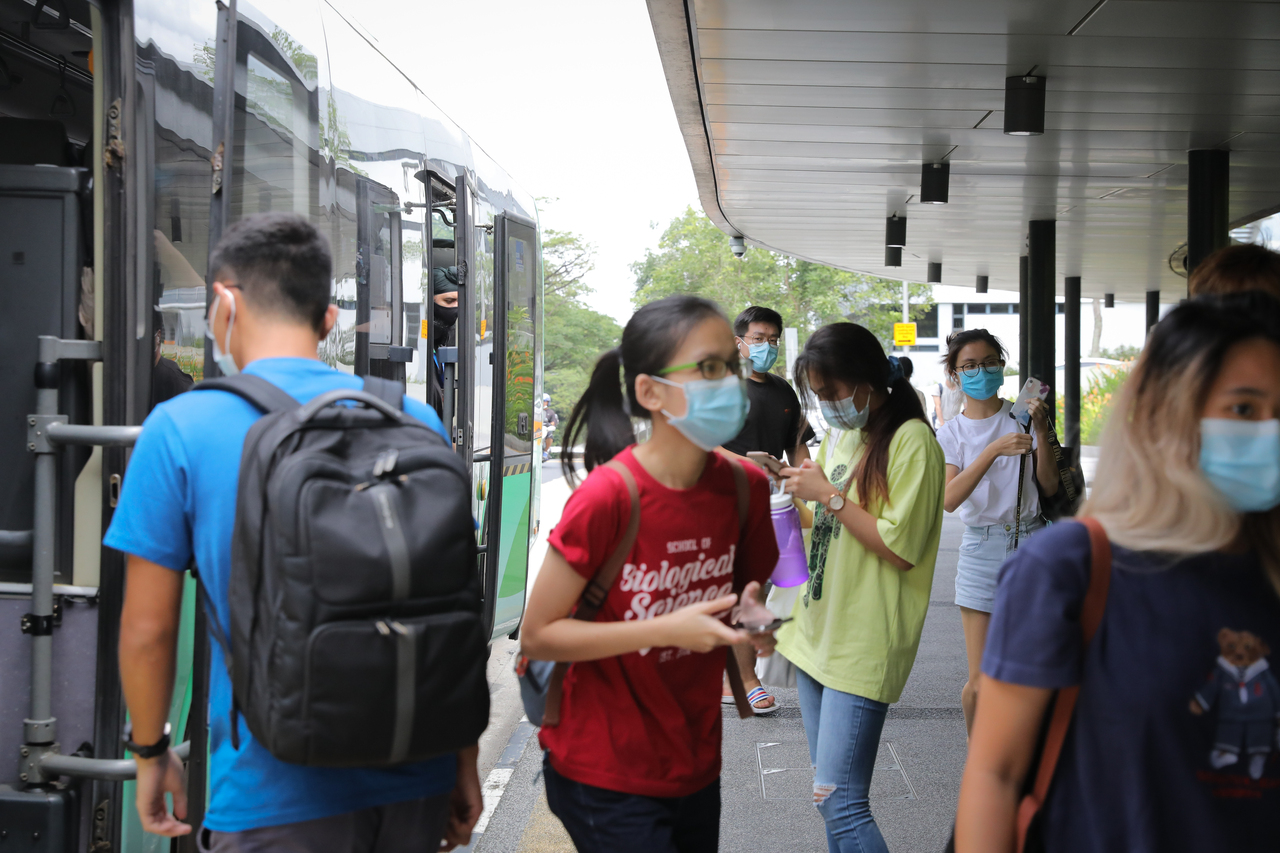More women pursuing degrees in Stem fields: MOE
Sign up now: Get ST's newsletters delivered to your inbox

Based on the combined university intake data from 2019, women accounted for 41 per cent of the cohort in Stem courses.
ST PHOTO: ONG WEE JIN
Follow topic:
SINGAPORE - The proportion of women pursuing university degrees in the areas of science, technology, engineering, and mathematics (Stem) has been increasing, according to the latest available statistics from the Ministry of Education.
Based on the combined university intake data from 2019, women accounted for 41 per cent of the cohort in Stem courses, up from 38 per cent in 2017.
These included courses in architecture, building and real estate, dentistry, engineering sciences, health sciences, information technology, medicine, and the natural, physical and mathematical sciences across six local universities.
Among these, the number of women pursuing degrees in the health sciences, such as biomedical sciences, diet and nutrition and pharmacy, had the highest representation, accounting for 75 per cent of the cohort in 2019.
In contrast, women had the least representation in information technology, which includes courses in computer science, business analytics and data science, making up 35 per cent of the cohort in 2019, though there was an increase from 28 per cent in 2017.
Similarly, more women have been pursuing the natural, physical and mathematical sciences over the years, from 54.5 per cent of the cohort in 2017 to 58.5 per cent in 2019.
However, despite more women pursuing Stem degrees in local universities, only 30 per cent of local researchers and engineers are women, according to the A*Star Manpower Survey in 2018.
Figures from the Infocomm Media Development Authority have also revealed that women account for only 30 per cent of Singapore's 200,000-strong infocomm workforce.
This can be attributed to what is known as the "leaky pipeline" of science, which means women who pursued Stem degrees do not go on to join the workforce in related areas, said Dr Rebecca Tan, who holds a doctorate in immunology, and is the editor-in-chief of the Asian Scientist Magazine.
The main reason for this is largely family obligations, along with family-unfriendly work environments, marginalisation, and funding gaps, she noted.
In commemoration of the International Day of Women and Girls in Science on Feb 11, the Asian Scientist Magazine commissioned a survey with market research firm YouGov, surveying 1,064 local respondents on their perception of Stem careers as parents of children under the age of 18.
It was found that 36 per cent of the respondents ranked science and technology as the most desirable career for boys, and 28 per cent for girls.
Almost four in five respondents believed there were gender-biases in the working world.
This was something that resonated with Dr Sherry Aw. The independent fellow at the Institute of Molecular and Cell Biology has been doing research on movement disorders, such as Parkinson's Disease and the essential tremor, by researching on fruit flies for years.
Yet, despite making important breakthroughs in her research, Dr Aw has also experienced biases.
"I've been asked many times (throughout my career) if I were a post-doctorate (researcher) or a student, while my husband, who also works in the sciences, has never been asked that question," she said.
"People look at me and they don't automatically see authority, (which leads me to) think that if I were a man, I would automatically be accorded with more respect."
In addition, women, more than men, tend to underestimate or undervalue their own capabilities, and so many fail to realise that they have "exactly what it takes" to succeed in science.
To overcome this, Dr Aw hopes there could be more role models in the industry, to educate people, especially women, to recognise and move past their own biases.
"It is up to leaders, both men and women, to speak up and ensure one day, the playing field will really be equal," she said.
Correction note: In an earlier version of the article, we said 54 per cent of the women have been pursuing the natural, physical and mathematical sciences. This is incorrect. It should have been 54.5 per cent. We also said that the courses were from five local universities. This should have been six. We are sorry for the errors.

